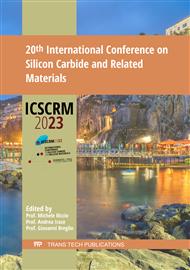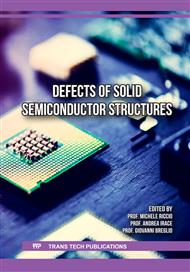p.67
p.71
p.81
p.87
p.93
p.99
p.105
p.111
p.117
Near-Interface Defect Decomposition during NO Annealing Analyzed by Molecular Dynamics Simulations
Abstract:
We have used molecular dynamics simulations to investigate the decomposition mechanisms of residual C defects near the interface of 4H-SiC/SiO2 during NO annealing. We have observed drastically rapid defect decomposition by NO and O2 mixed gas, which is thermodynamically more realistic, compared with single NO or O2 gas annealing. We have constructed simplified defect decomposition model. This model numerically reproduced the simulation results, suggesting that multi-step and cooperative reactions caused by the coexistence of NO and O2 during NO annealing effectively promote the decomposition of residual C defects.
Info:
Periodical:
Pages:
93-98
Citation:
Online since:
August 2024
Authors:
Keywords:
Permissions:
Share:
Citation:



